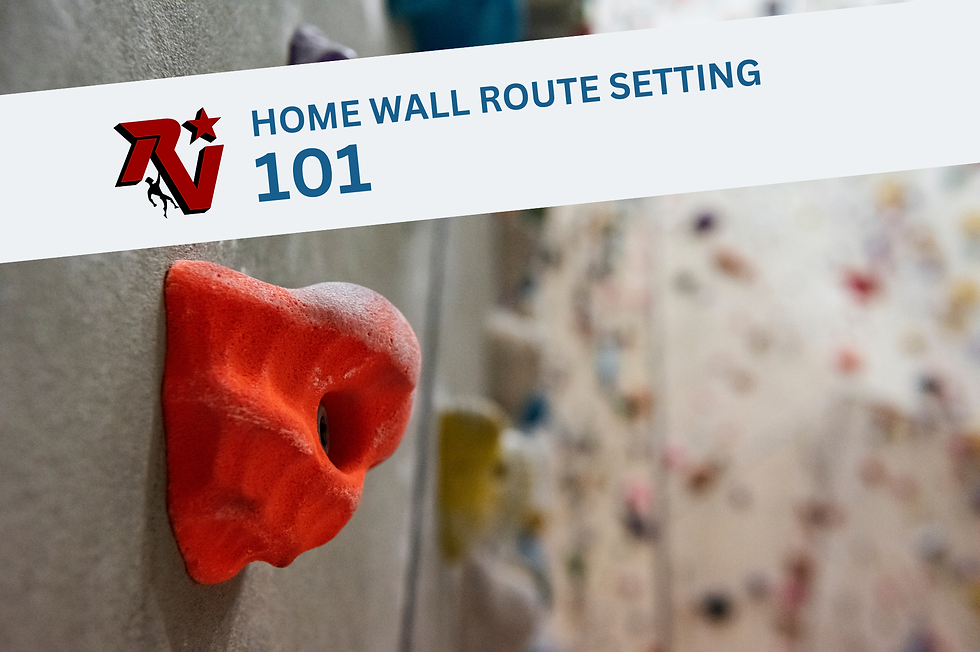So...How Long Until That Climbing Training Program Starts to Pay Off?
- Dovi Hirsch
- Dec 22, 2020
- 4 min read
by Christopher Schafenacker

We would love to say that your climbing training program is going to start paying off tomorrow, or in a week, or maybe early next month. But the truth is: there’s no simple answer to the title question. Most folks asking when their climbing training program will pay off simply want to know when they’re going to be noticeably stronger. Conventional wisdom states that you need to stick with a program for at least six months to see gains, but conventional wisdom ignores a ton of important variables. These include age, current skill level, training history, training plan, and what you even mean by “pay off,” anyway.
If you’re new to climbing and infected by the insatiable psych so often responsible for ushering new converts into our little cult, stop reading and go huck laps at the gym or crag. There is no climbing training plan for beginners; instead, there is just climbing. To quote legendary coach Steve Bechtel: “‘training’ is a waste of time for climbers at [the beginner] level; their climbing should be looked at as practice and measured in hours.” The reasoning here is that climbing is a technique-based sport. Before gains in strength and power can pay off, you first need to learn to move like a climber. For the beginner, then, your training will pay off daily. Once you’ve logged at least a thousand hours on the wall (yes, literally on the wall, not just hanging at the crag) you can begin thinking about kicking off a focussed climbing training program.
The intermediate climber—that person who has logged a few thousand hours climbing and is performing at eighty to ninety percent of their genetic potential—is the climber most-likely to see appreciable gains from climbing-specific training. When these gains arrive depends on whether your climbing training plan follows a linear, non-linear, or some other periodization structure (here’s an article explaining the difference) as well as—again—how you characterize improvement. Different plan structures will provide different performance peaks and valleys—which is why it is crucial to build around specific goals—but none will provide marked improvement in anything short of months. This said, you will notice incremental gains between sessions and cycles. Last week you might’ve only been able to do four sets of hangs; this week you can do five; next week you’ll do six. Such tiny improvements can mean the difference between two quality burns on your project and three which, itself, is something to celebrate even if the big breakthrough you’re training towards is slow to arrive.
Elite climbers are the group who need to grind the hardest and wait the longest to see gains because they are already performing at near their genetic potential. Anyone belonging to the category already knows this, though, and so I’ll leap past the elite to a final point concerning how long you might have to wait to see pay off from your climbing training plan: neural adaptation.
Droves of climbers have been frustrated by putting the work in at the gym and seeing no results on the rock. A contributing factor is underdeveloped real rock skills like route reading, rest know-how, fear management, and outdoor foot technique; another is the fact that improving in climbing is not just about getting stronger, but about learning to put the strength you gain to use. Researchers call this “intermuscular coordination” or, “the capacity of the nervous system to coordinate the ‘rings’ of the kinetic chain, thus making [a given] gesture more efficient.” In climbing language this means using fewer muscle fibers, or less strength, to execute a move. No number of hours logged in the gym will train the coordination needed clip the chains on an outdoor test piece in efficient style. This you get from gobbling up movement patterns until they’re written into your nervous system and as automatic as walking. Hence the reason that leather-skinned old school crusher puts down routes you can’t fathom despite you busting out more pullups in a single sesh than she’s ever done in her life. Yeah, you’re probably stronger, but you simply don’t climb as well.
The best answer I can come up with concerning when you’ll see pay off from your climbing training program, then, is that you’ll see it when you choose to. The fact that you follow a plan is improvement if you’re new to training; the fact that you added one set to your hangboard routine is improvement; even the fact that you flailed up your project three more times today is improvement if you recognize that building intermuscular coordination is key to getting better at climbing. Improvement comes when you recognize its many vehicles and, especially, when you dedicate time (in the form a structured training) to its pursuit.
Featured Climbing Training Gear
*NEW* The Rocketeer Wall: our free-standing adjustable solution for those who can’t mount a hangboard anywhere in their home or apartment—or who are limited on space. The Rocketeer gives climbers the additional option to set specific climbing holds. Recreate the crux holds of your proj and get ready to send, bruh.
The Rocket Wall: Available in 6’ and 8’ widths, it’s been tough for us to keep up with the demand for this innovative home climbing wall solution. Slightly overhanging, the Rocket Wall is big enough to set routes on, or to build a systems board.
The Rock-Stah: Our handcrafted version of a traditional hangboard, with curving crimp rails to help alleviate unnecessary strain on your pulleys. Because ain’t no one got time for a finger injury…
Christopher Schafenacker started climbing in Western MA before moving to Granada, Spain, where he now writes, climbs, and runs education-centered training camps for competitive youth climbing teams.










Comments